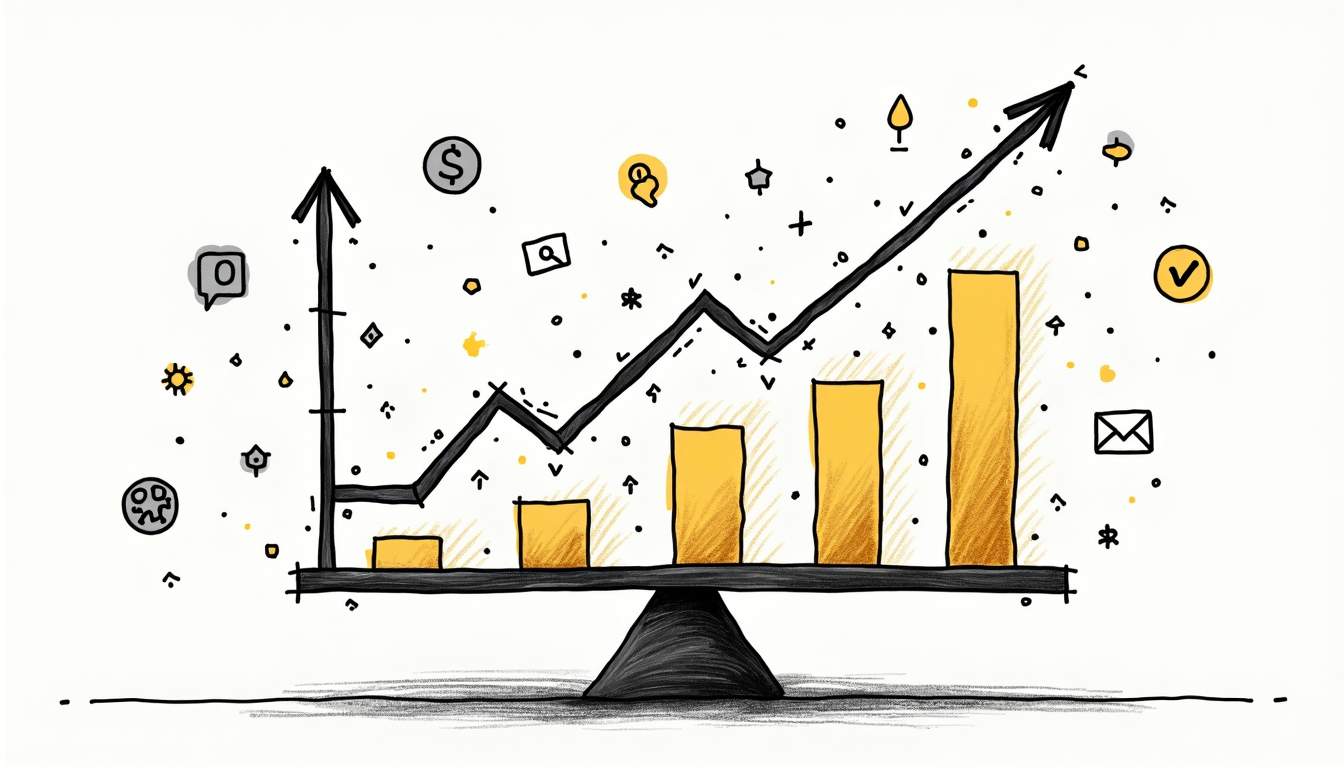In today’s rapidly shifting global economy, brands face an unprecedented challenge: how to allocate resources effectively amid economic uncertainty. From inflation spikes and supply chain disruptions to geopolitical tensions and fluctuating consumer confidence, businesses must rethink their investment strategies to stay resilient and competitive. This article explores how economic uncertainty influences brand investment decisions, highlighting key trends, strategic pivots, and actionable insights for marketers and business leaders.
Understanding Economic Uncertainty and Its Impact on Brands
Economic uncertainty refers to the unpredictability of economic conditions that can affect business performance and consumer behavior. This can stem from a variety of factors such as recessions, inflation, political instability, or global crises like the COVID-19 pandemic. When economic conditions are volatile, companies often face difficult decisions about where and how to invest their marketing and brand-building budgets.
For brands, uncertainty can lead to cautious spending, but it can also create opportunities for those willing to adapt quickly. According to a 2023 report by McKinsey & Company, brands that maintained or increased their marketing investments during economic downturns grew 2.5 times faster than those that cut back. This statistic underscores the importance of strategic brand investment even in uncertain times.
Consumer Behavior Shifts During Economic Turbulence
One of the most immediate effects of economic uncertainty is a change in consumer behavior. When faced with financial stress or job insecurity, consumers tend to prioritize essential purchases, seek value deals, and become more selective about brand loyalty. NielsenIQ data from early 2024 shows that 68% of consumers are actively looking for discounts or promotions, while 54% report switching brands to save money.
Brands that understand these shifts can tailor their messaging and product offerings to meet evolving needs. For example, emphasizing affordability, quality, or sustainability can resonate more strongly during uncertain times. Moreover, transparent communication about pricing and value can build trust and foster long-term relationships.
In addition to seeking discounts, consumers are increasingly turning to digital channels for their shopping needs. The rise of e-commerce has accelerated during periods of economic uncertainty, as consumers look for convenience and competitive pricing. Brands that invest in their online presence and enhance user experience can capture this shifting consumer base. A 2023 survey indicated that 75% of consumers prefer brands that offer seamless online shopping experiences, highlighting the need for brands to innovate and adapt their digital strategies to meet these expectations.
Furthermore, social media platforms have become vital for brands to engage with consumers during uncertain times. Brands that leverage social media not only to promote products but also to foster community and provide valuable content can strengthen their connection with consumers. This engagement can take many forms, from interactive campaigns to sharing stories of resilience and support, which resonate deeply with consumers navigating their own uncertainties. By positioning themselves as relatable and responsive, brands can cultivate loyalty that transcends mere transactional relationships.
Strategic Adjustments in Brand Investment
Economic uncertainty demands that brands rethink their traditional investment strategies. Rather than making across-the-board cuts, successful companies adopt a more nuanced approach that balances risk management with growth opportunities.

Prioritizing Digital and Data-Driven Marketing
Digital marketing has become a cornerstone of brand investment, especially in uncertain economic climates. It offers flexibility, measurable ROI, and the ability to quickly adjust campaigns based on real-time data. According to eMarketer, digital ad spending in the US increased by 12% in 2023, even as overall marketing budgets tightened.
Brands are leveraging advanced analytics and AI-powered tools to optimize targeting, personalize content, and improve customer engagement. This data-driven approach allows marketers to allocate budgets more efficiently, focusing on channels and messages that deliver the highest impact.
Investing in Brand Equity and Customer Experience
While short-term sales activation is important, economic uncertainty highlights the value of investing in brand equity—the long-term perception and emotional connection consumers have with a brand. Research from the BrandZ Top 100 Most Valuable Global Brands report indicates that companies with strong brand equity outperform the market by nearly 70% during economic downturns.
Enhancing customer experience (CX) is a key component of building brand equity. Brands are investing in omnichannel strategies, improving service quality, and creating seamless shopping experiences both online and offline. These efforts not only retain existing customers but also attract new ones, even when budgets are tight.
Agility and Scenario Planning
Economic uncertainty requires brands to be agile and prepared for multiple scenarios. This means developing flexible budgets and contingency plans that can be adjusted as conditions evolve. For example, some brands adopt a “test and learn” approach, launching smaller campaigns to gauge effectiveness before scaling up.
Scenario planning also involves monitoring key economic indicators and consumer sentiment closely. By staying informed, brands can anticipate shifts and pivot their strategies proactively, rather than reacting too late.
Case Studies: Brands Navigating Economic Uncertainty Successfully
Examining real-world examples provides valuable insights into how brands can adapt their investment strategies effectively.
Procter & Gamble’s Balanced Approach
During the 2020 pandemic-induced recession, Procter & Gamble (P&G) maintained its marketing spend while shifting focus toward essential product categories like hygiene and cleaning. The company also accelerated its digital transformation, enhancing e-commerce capabilities and direct-to-consumer channels.
This balanced approach helped P&G not only sustain sales but also strengthen its brand presence. By 2023, P&G reported a 5% increase in global market share in key categories, demonstrating the payoff of strategic investment during uncertain times.
Nike’s Emphasis on Innovation and Community
Nike faced significant challenges during recent economic disruptions but doubled down on innovation and community engagement. The brand invested heavily in digital platforms, personalized experiences, and sustainability initiatives, which resonated with younger, value-conscious consumers.
Nike’s “Move to Zero” campaign, focused on zero carbon and zero waste, combined with targeted digital marketing, helped the company grow revenue by 7% in 2023 despite inflationary pressures. This highlights how aligning brand values with consumer priorities can drive growth amid uncertainty.
Practical Recommendations for Marketers
To navigate economic uncertainty successfully, brands should consider the following strategic recommendations:

1. Maintain or Increase Brand Investment Where Possible
Cutting marketing budgets may seem prudent, but evidence suggests that brands investing consistently during downturns recover faster and gain market share. Prioritize spending on high-impact channels and campaigns that reinforce brand value.
2. Leverage Data and Technology
Use analytics to understand shifting consumer behaviors and optimize marketing spend. Embrace automation and AI tools to improve targeting, personalization, and campaign agility.
3. Focus on Customer Experience and Loyalty
Enhance CX through seamless omnichannel experiences, responsive customer service, and loyalty programs. Building emotional connections can increase customer retention and lifetime value.
4. Communicate Transparently and Authentically
In uncertain times, consumers appreciate honesty and clarity. Brands should communicate openly about pricing, product availability, and any changes affecting customers.
5. Develop Flexible Budgets and Scenario Plans
Prepare for multiple economic outcomes by creating adaptable investment plans. Monitor market trends closely and be ready to pivot quickly as conditions change.
The Future of Brand Investment in an Uncertain World
Economic uncertainty is unlikely to disappear anytime soon, given ongoing geopolitical tensions, climate change challenges, and technological disruption. Brands that embrace agility, invest wisely in digital and experiential marketing, and prioritize authentic consumer relationships will be best positioned to thrive.
Moreover, sustainability and corporate responsibility are becoming integral to brand strategy, reflecting growing consumer expectations. Brands that integrate these values into their investment decisions can differentiate themselves and build resilient equity.
Ultimately, economic uncertainty reshapes brand investment strategy by demanding a more thoughtful, data-driven, and consumer-centric approach. Companies that adapt proactively will not only weather storms but emerge stronger and more relevant in the eyes of their customers.
